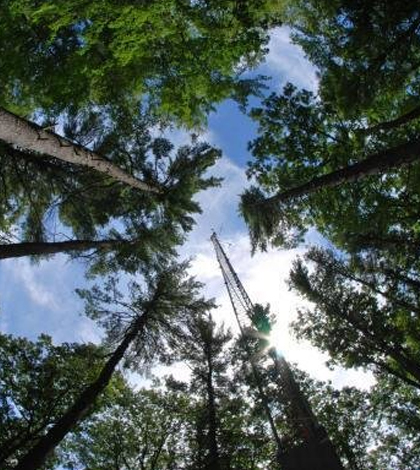Researchers Measure Photosynthesis With Satellites, Track Tree Growth

Researchers use fluorescence as a proxy for photosynthesis to monitor tree growth. (Credit: Marc Mayes / Brown University)
When plants use photosynthesis for their metabolic processes, they produce a glow due to chlorophyll fluorescence. According to a recent press release from Brown University, scientists have learned how to assess that glow using satellites.
A previous method for monitoring forest photosynthesis and health utilized the forest’s greenness index as a gauge of forest vitality. However, greenness is a property that lags behind the actual health of forests, scientists say.
The new chlorophyll fluorescence method, however, reflects the state of the forest health in real time. Furthermore, satellites are sensitive enough that daily differences can be detected, making accurate, long-term remote monitoring possible.
A common method for monitoring forest health is eddy covariance, which measures carbon dioxide interchange between forest plants and the air around them. This method can only measure the health of nearby forests, whereas the new satellite-based method covers much larger areas and gives much more complete pictures of forest health.
The study was conducted in Massachusetts’ Harvard Forest.
Top image: Researchers use fluorescence as a proxy for photosynthesis to monitor tree growth. (Credit: Marc Mayes / Brown University)




0 comments